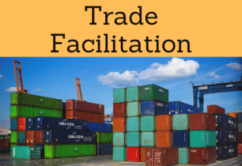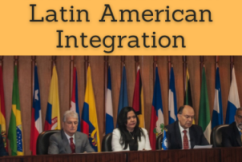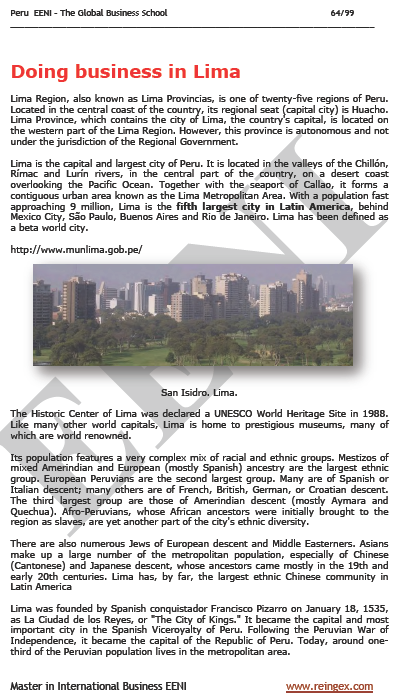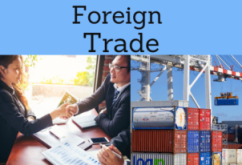Business in Peru

Foreign Trade and Business in Peru - Lima. Peruvian economy. Agribusiness, textiles
- Introduction to Peru (Andean Community)
- Peruvian Economy
- Economic Profile of the Peruvian Regions
- Economic Sectors of interest:
- Textiles
- Tourism
- Services
- Infrastructure
- Call centers
- Peruvian International Trade
- Investment in Peru
- Set up a Company in Peru
- Business in Lima
- Case Study.
- Business Opportunities in agribusiness, textile, and services
- CAMPOSOL Group
- Creditex
- Case Study: Transport and Logistics in Peru.
- South Inter-oceanic Hub
- Access to the Peruvian Market
- Business Plan for Peru
The objectives of the subject “International Trade and Business in Peru” are the following:
- To analyze the Peruvian Economy and Global Trade
- To know the trade opportunities in Peru
- To explore the Peruvian trade relations with the country of the student
- To know the Peruvian Trade Agreements
- To examine the profile of the Peruvian Companies
- To develop a business plan for the Peruvian Market

The Subject “Foreign Trade and Business in Peru” belongs to the following Online Programs taught by EENI Global Business School:
Masters: International Business, Foreign Trade.
Doctorate: American Business, World Trade.

Languages:  or
or  Perú
Perú  Perou
Perou  Peru.
Peru.
- Credits of the subject “Doing Business in Peru”: 3

- Duration: three weeks

International Trade and Business in Peru

- Peru and the Latin American Economic Area
- Andean Community
- APEC
- Latin American Integration Association (ALADI)
- Pacific Alliance
- Union of South American Nations (UNASUR)
- Latin American and Caribbean Economic System
- Peru has trade agreements with Chile, MERCOSUR, EU, and the EFTA
- Singapore-Peru Agreement
- U.S.-Peru Agreement
- Peru-Canada Agreement
- Japan-Peru Agreement
- Peru-South Korea Agreement
- Mexico-Peru Trade Integration Agreement
- Panama-Peru Agreement
- Peru-Honduras Agreement
- Costa Rica-Peru Agreement
- Peru-Australia Agreement
- Peru-China Agreement
- UK-Ecuador-Peru Free Trade and Economic Integration Agreement
- Global System of Trade Preferences
- Agreement for Trans-Pacific Partnership
- Trade Negotiations Among Developing Countries
- MERCOSUR (associate member)
- SICA (observer country)

- WTO
- GATS
- Agreement on Sanitary Measures
- Agreement on Technical Barriers to Trade
- Agreement on Preshipment Inspection
- Agreement on Safeguards
- Trade Facilitation Agreement
- WCO
- BIC
- Chicago Convention (ICAO)
- IMO
- Istanbul Convention - not a member
- Customs Convention on Containers - not a member

- Inter-American Development Bank
- OAS
- ECLAC
- Africa-South America Summit
- CELAC
- EU-CELAC Summit
- East Asia-Latin America Cooperation
- Summit South American-Arab Countries

- UN
- WB
- IMF
- PEEC
- The Republic of Peru is located on the western coast of Latin America
- The Borders of Peru are Brazil, Bolivia, Chile, Colombia, and Ecuador
- The Peruvian capital, Lima (8 million people) is the largest city in the Andean region
- The Departments of Peru are Amazonas, Ancash, Apurímac, Arequipa, Ayacucho, Cajamarca, Cusco, Huancavelica, Huanuco, Ica, Junín, La Libertad, Lambayeque, Lima-Provinces, Loreto, Madre de Dios, Moquegua, Pasco, Piura, Puno, Saint Martin, Tacna, Tumbes, and Ucayali) and Callao
- Peruvian major languages: Spanish is the official language, while Quechua and Aymara are co-officials
- Peruvian Population: 31 million people
- Area of Peru: 1,285,216 km². Peru is the third largest country in South America, after Brazil and Argentina
- Independence of Peru from Spain in 1821
- Abolition of Slavery in Peru: 1854
- African Diaspora in Peru: 0.5 million people (2% of the Peruvian population)
Religion in Peru: Christianity (31 million). Catholicism (24 million) and Protestantism

Peru belongs to the Latin American Economic area of the Western Civilization.
Peruvian Economy
- Peru has strong economic ties with the American and the Asian markets
- The economic forecast seems favorable to Peru in the next years, based on the foreign direct investment (mining, industry, communications, and energy), international trade and local consumption
- Lima is the economic, financial, and foreign trade centre of Peru
- Lima (8.5 million people - Source: INEI), generates 35% of the industrial production and 53% of the Peruvian GDP
- Lima is the home of the largest Peruvian and multinational companies
- Arequipa is the “city with the highest economic growth in Latin America” (Source: America Economia)
- The Peruvian agribusiness sector (Food and agricultural production) has grown significantly due to the dynamism in food products exports in the last four years (annual growth of 20%)
- The Peruvian telecommunications sector is one of the fastest economic growth in Peru
- Peru is increasingly oriented toward Asia-Pacific (APEC and TPP)
- Peruvian currency: Nuevo Sol (PEN)

Global Trade and Business in Peru:


Peruvian international trade.
- The Port of Callao is the largest international trade port in the Andean Community
- Main Exports of Peru are mining (copper, gold, molybdenum, silver, and zinc: 58% of Peruvian exports), agriculture, fishing, hydrocarbons products, and manufactures
- Peruvian exports augmented 13% and recorded 31,529 million dollars (3.5 times higher than in 2002)
Foreign direct investment in Peru.
- Spain, the UK, and the U.S. are the main foreign direct investment (FDI) sources in Peru

(c) EENI Global Business School (1995-2024)
We do not use cookies
Top of this page


